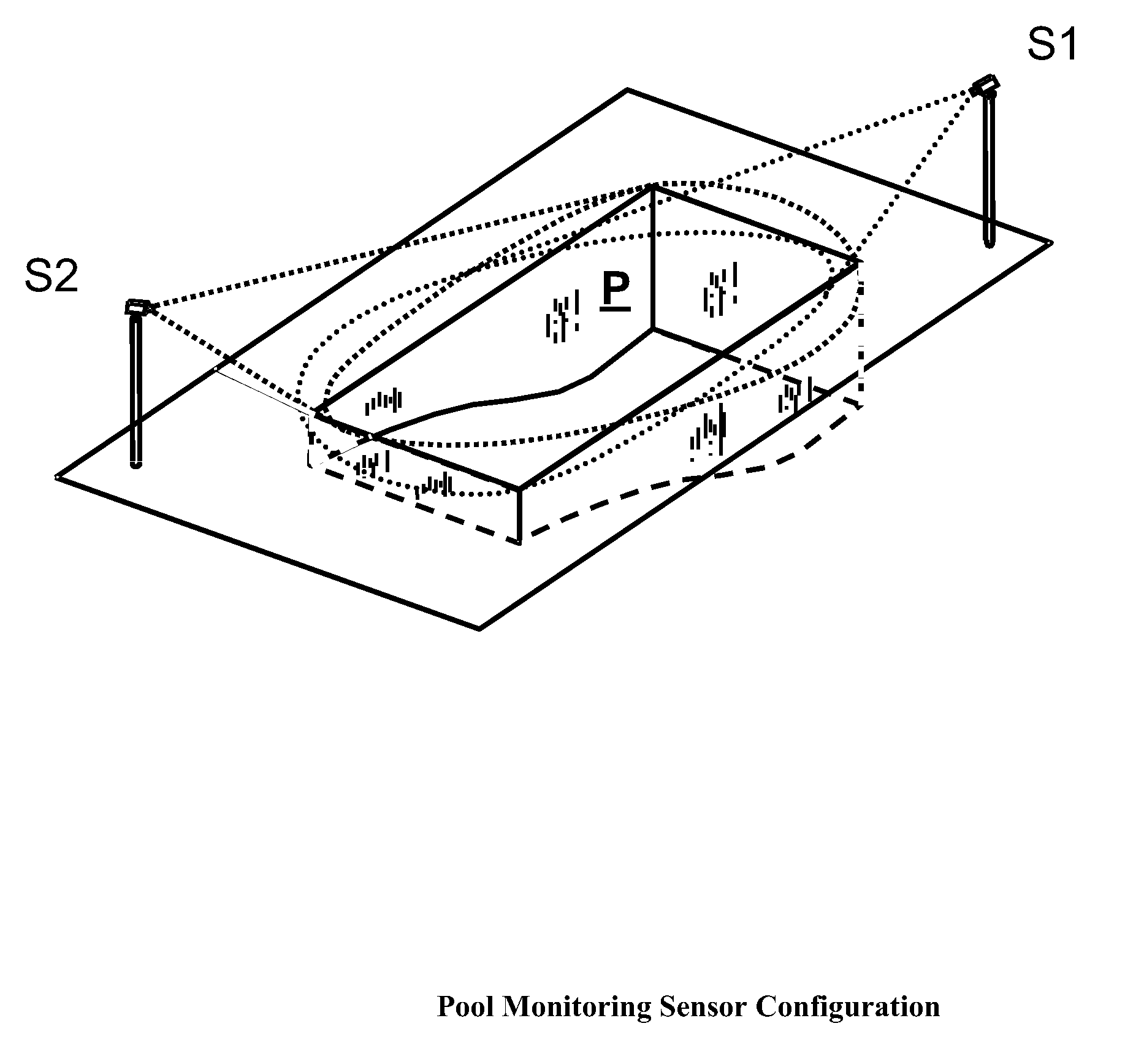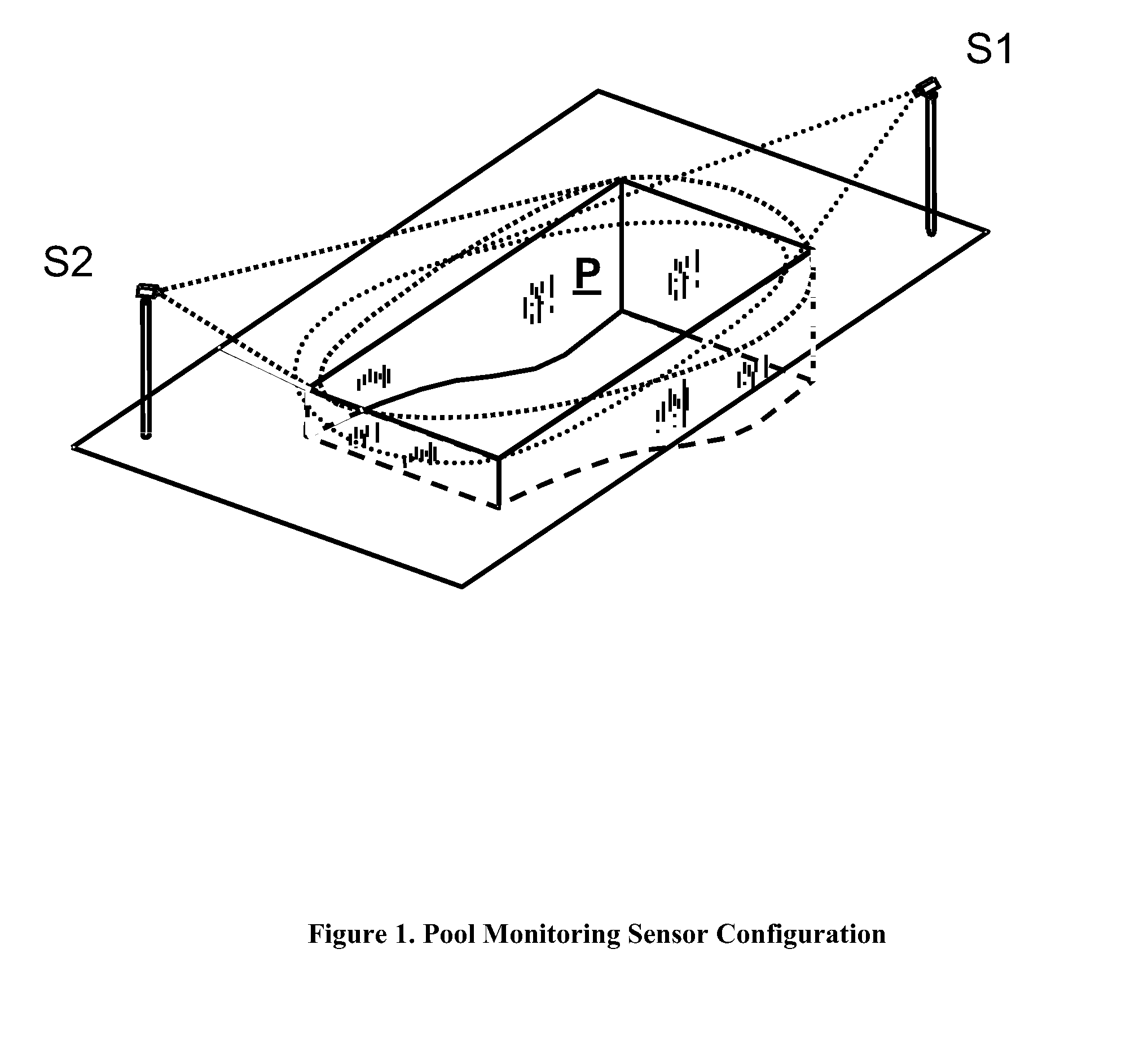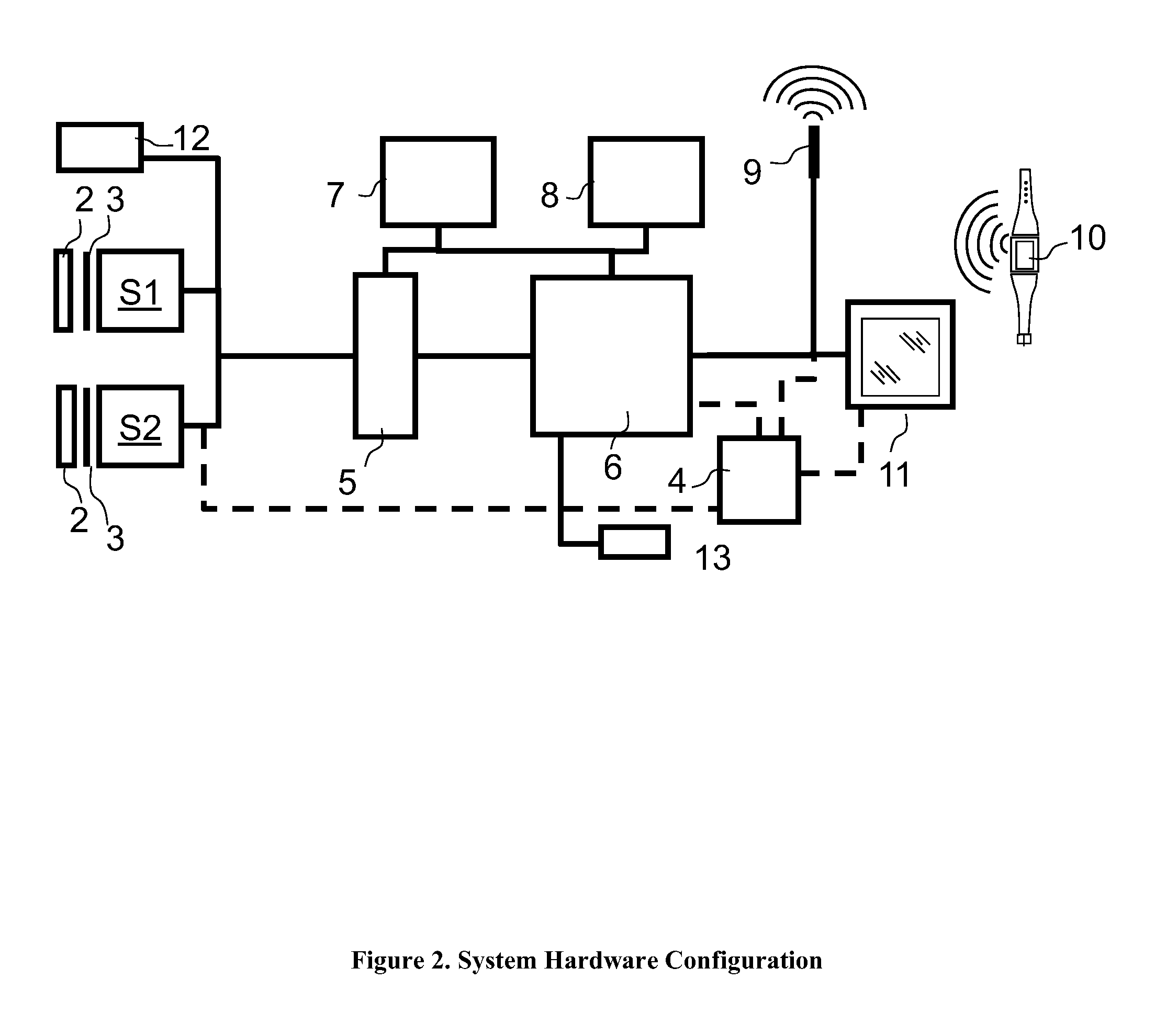Above-water monitoring of swimming pools
a technology for monitoring and swimming pools, applied in burglar alarms, television systems, instruments, etc., can solve the problems of reducing the accuracy of alarms, requiring extensive or cumbersome calibration methods or algorithms, and limiting the functionality of above-described prior-art devices. , to achieve the effect of improving reliability and reducing costs
- Summary
- Abstract
- Description
- Claims
- Application Information
AI Technical Summary
Benefits of technology
Problems solved by technology
Method used
Image
Examples
Embodiment Construction
[0032]In the following description of an above-water system for monitoring pools for possible drowning victims, reference is made to the accompanying drawings forming a part thereof. These drawings show by way of illustration, a specific embodiment in which the invention may be implemented. Other embodiments may be utilized and structural changes may be made without departing from the scope of the present invention.
[0033]In this specification, the term “video” is defined as a series of time sequenced electro-optical (EO) images within a portion of the bandwidth of wavelengths from infra-red to ultraviolet energy. The EO sensors may be mounted on rigid poles, walls, or ceilings, or any combination thereof. The sensors receive video images of the pool surface including images of humans and objects within the water volume, at or below the surface.
[0034]The EO sensor housing may include a pair of apertures at a known separation distance providing stereoscopic images of the field of view...
PUM
 Login to View More
Login to View More Abstract
Description
Claims
Application Information
 Login to View More
Login to View More - R&D
- Intellectual Property
- Life Sciences
- Materials
- Tech Scout
- Unparalleled Data Quality
- Higher Quality Content
- 60% Fewer Hallucinations
Browse by: Latest US Patents, China's latest patents, Technical Efficacy Thesaurus, Application Domain, Technology Topic, Popular Technical Reports.
© 2025 PatSnap. All rights reserved.Legal|Privacy policy|Modern Slavery Act Transparency Statement|Sitemap|About US| Contact US: help@patsnap.com



